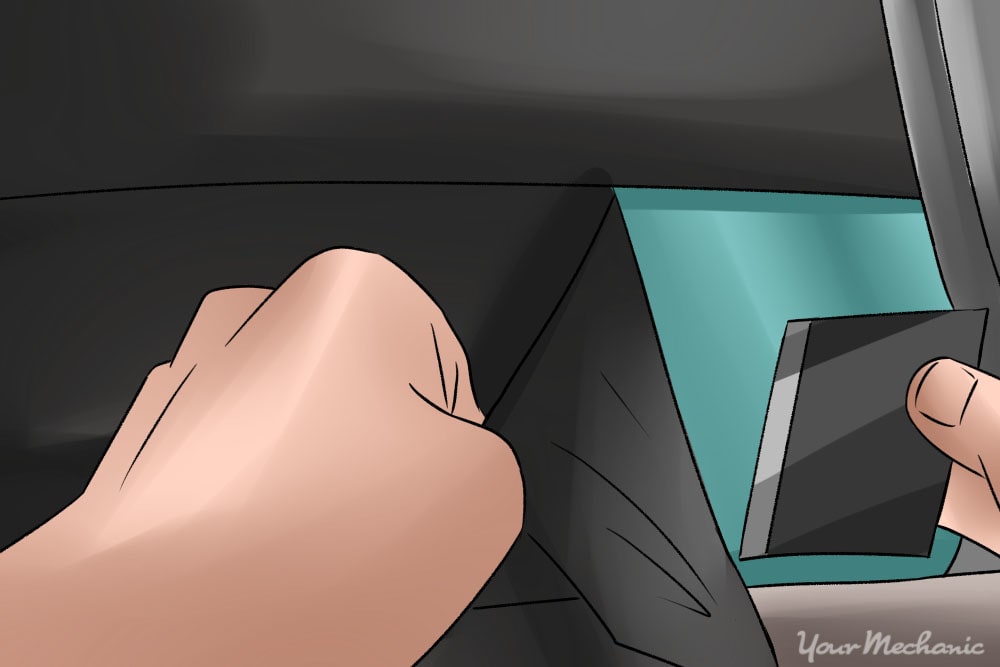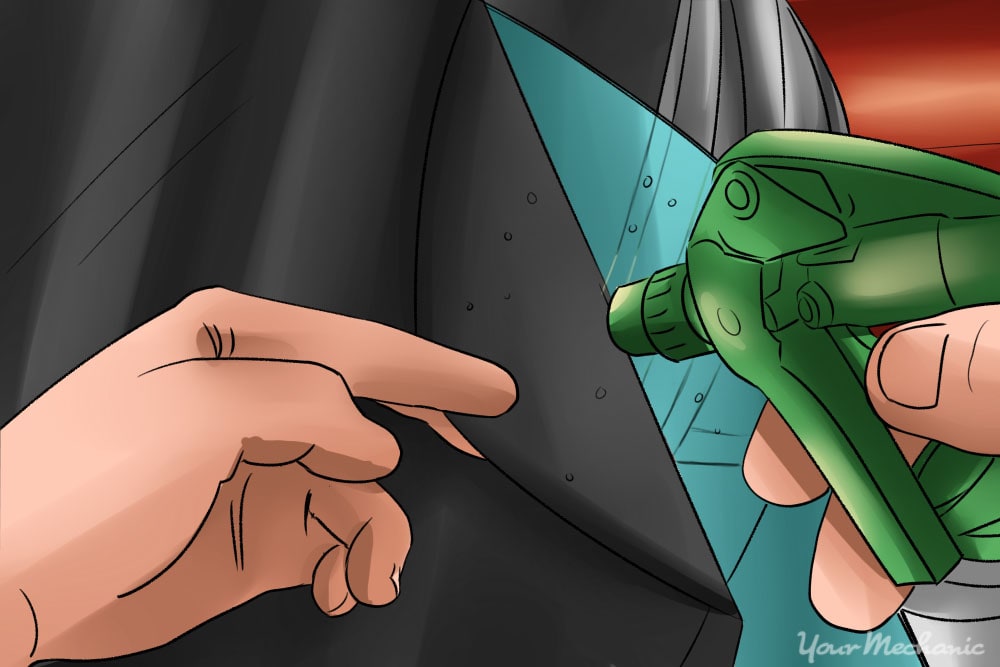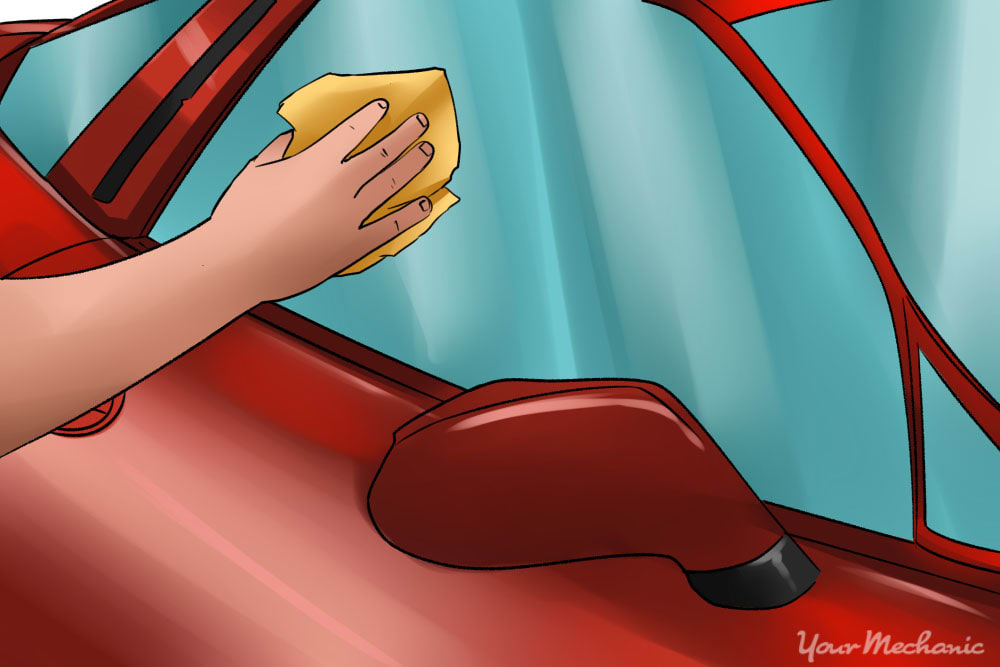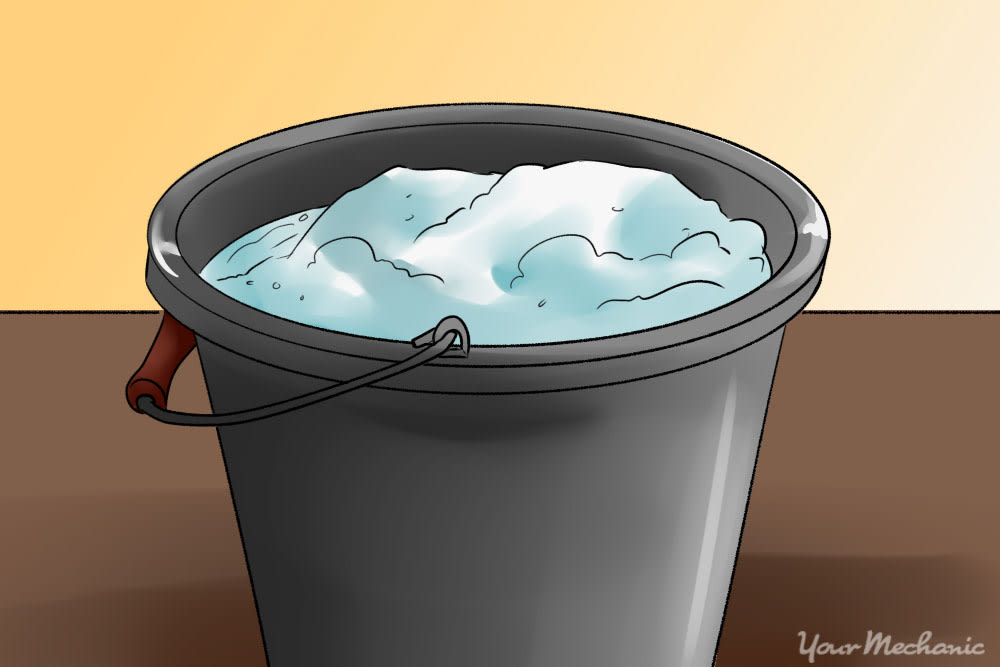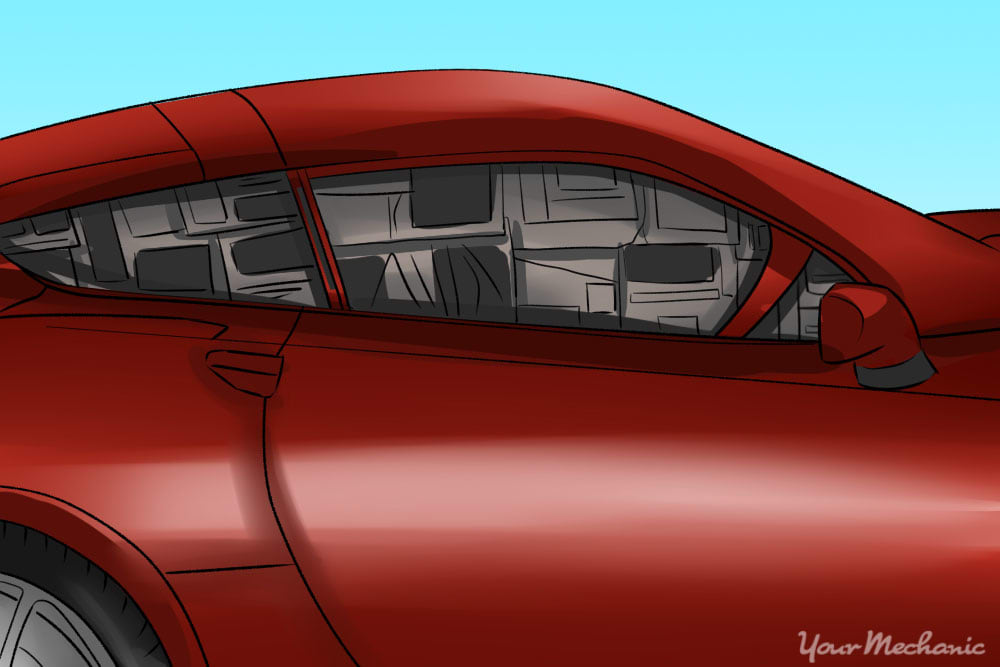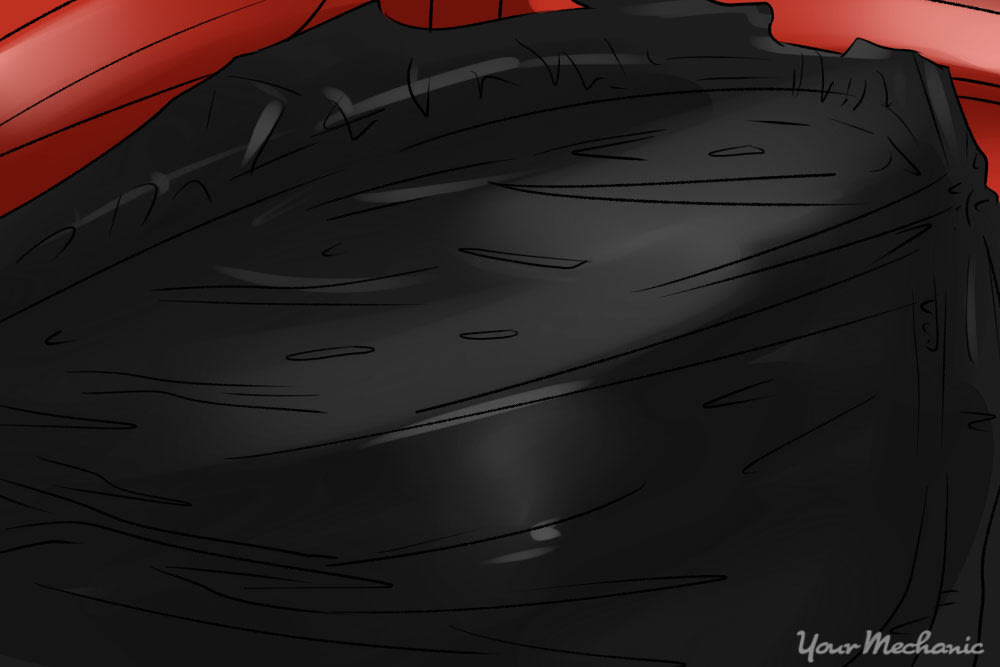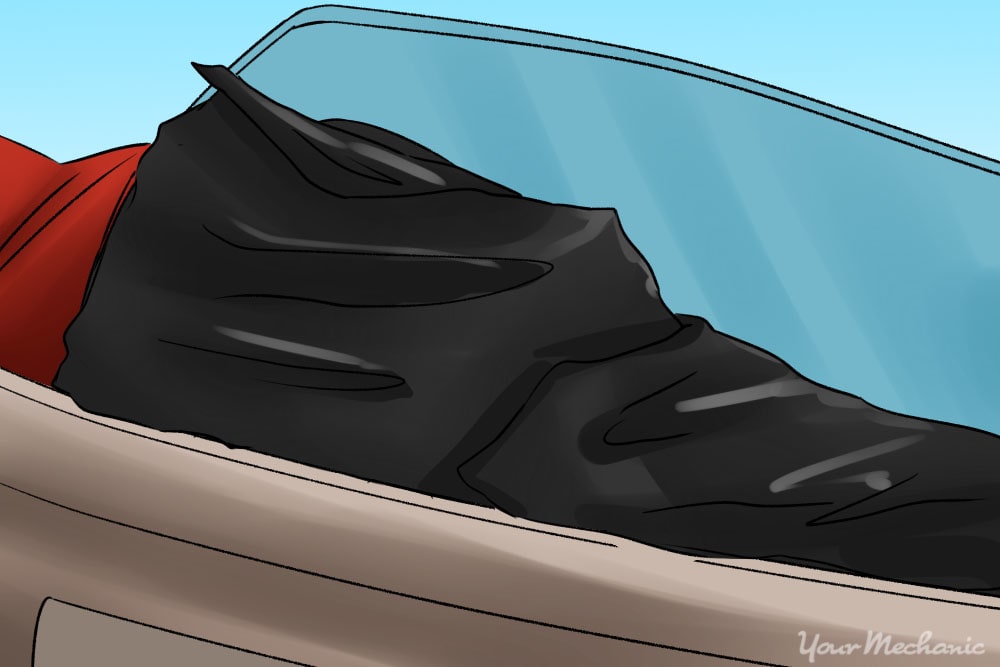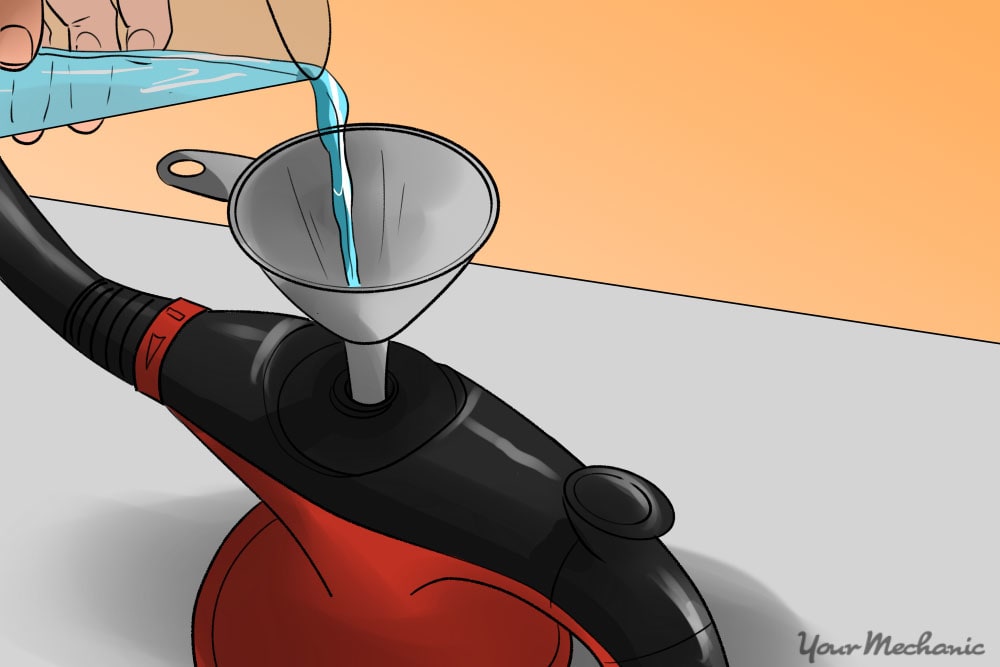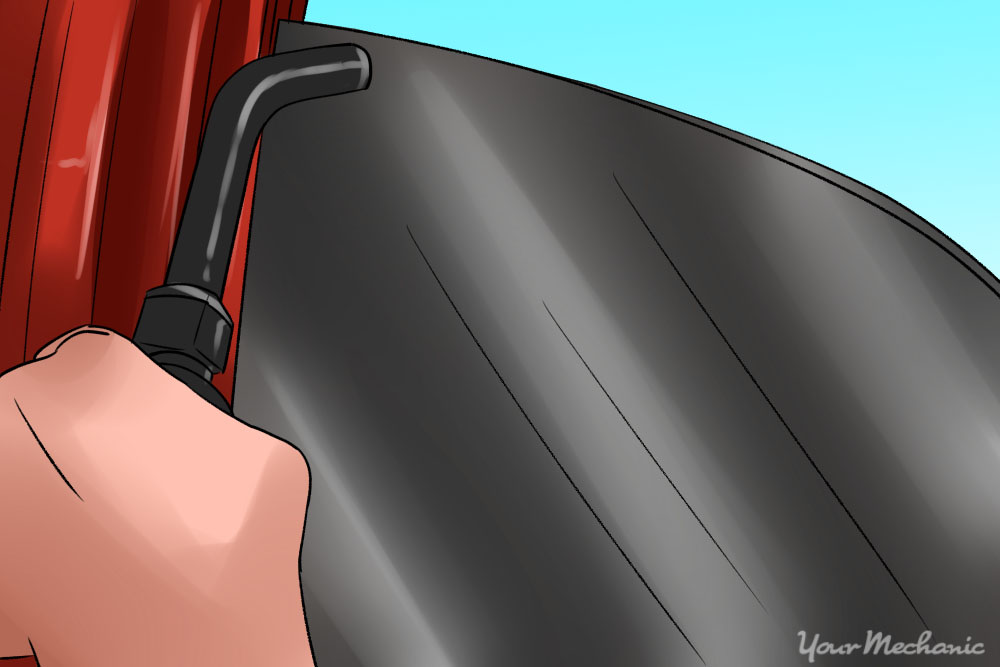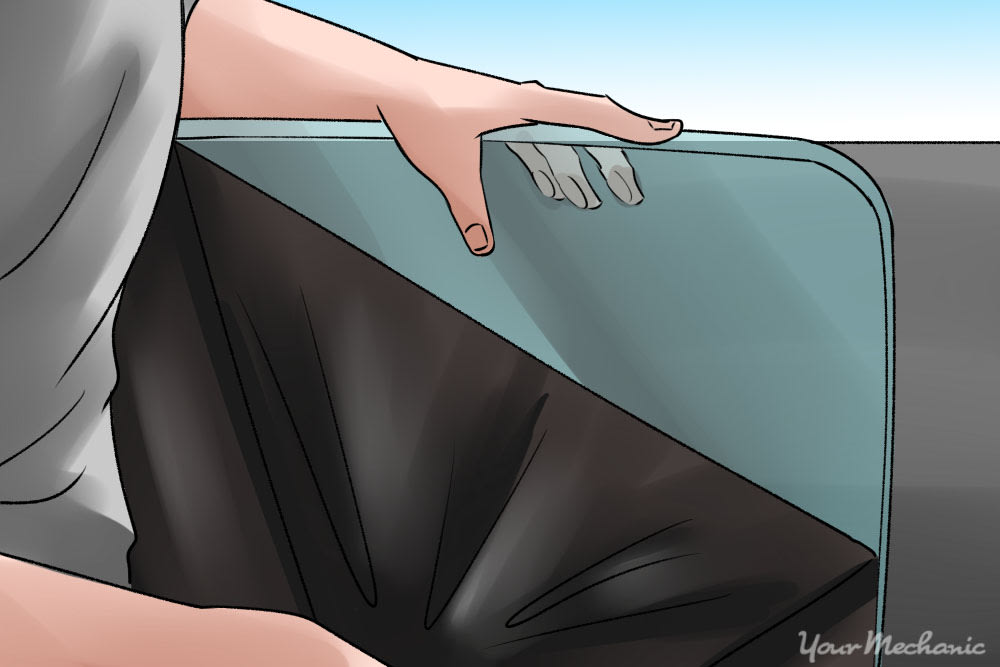

There are several reasons to have tinted windows on vehicles, including additional protection from UV rays, a degree of privacy, and cosmetic appeal. Over time, however, the elements and general wear and tear can take a toll on tint. Window tint damage can manifest as bubbles, scratches, or peeling along the edges, which is not only unattractive but reduces its efficiency as a UV protectant and privacy screen. Extreme temperatures – either hot or cold – can initiate separation of the tint film from the window's glass. Once separation begins, evident through bubbles or peeling, it quickly worsens.
While you may be tempted to simply peel damaged tint off of your vehicle's windows, the sticky residue left behind can take hours to scrape. Removal of car window tint is a far less intensive job than putting tint on. There are several effective DIY methods to remove window tint. Try one of these five proven methods that use easily accessible materials and limited know-how.
Method 1: Soap and Scrape
Materials Needed
- Dish soap
- Glass cleaner
- Paper towels
- Razor blade or razor knife
- Spray bottle
- Water
To remove small areas of window tint film, the simple soap-and-scrape method is effective. Most people have the necessary materials and tools on hand, and it doesn't require much finesse to be effective. It is, however, time-consuming and physically tiring, so other methods are better choices for larger windows, such as your windshield or back glass.
Step 1: Use knife to lift corner. Using a razor blade or knife, make a cut in a corner of the film. This will create a tab you can lift off of the window.
Step 2: Grasp and peel. Firmly grasp the free corner of film, and peel it from the window. In the event that it does not peel off in a single piece, repeat the lifting and peeling process on the remaining film until most or all of the tint has come off.
Step 3: Create soapy mixture. Prepare a mix of soapy water in a spray bottle, using a mild detergent like dish soap and warm water. There isn't a particular proportion that's necessary; the soapy mix is equivalent to the amount you would use to wash dishes.
Step 4: Spray mixture. Generously spray the soapy mix onto the adhesive residue left behind where you have peeled the tinted film.
Step 5: Scrape off adhesive. Carefully scrape the adhesive from the glass with a razor blade of knife, taking care not to cut yourself. As the soapy water dries, spray more to keep your working area moist.
Step 6: Clean the window. Clean the window with glass cleaner and paper towels after you have removed all of the adhesive.
Method 2: Soap and Newspaper
Materials Needed
- Bucket or bowl
- Dish soap
- Glass cleaner
- Newspaper
- Paper towels
- Razor blade or knife
- Sponge
- Water
This method is very similar to the soap-and-scrape method, but it requires far less elbow grease. It is also a good way to recycle old newspapers you may have lying around and doesn't require any particular skill set to do well.
Step 1: Create soapy mixture. Prepare a mix of dish soap and warm water in a bucket or bowl. You will want it a little soapier than you would use for washing dishes, but there are no exact proportions to achieve.
Step 2: Apply mixture to window and cover with newspaper. Generously apply the soapy water to your window with damaged tint and cover it with newspaper. Allow it to sit in this manner for approximately one hour, soaking the outside of the newspaper with more soapy water whenever it begins to dry (approximately every 20 minutes).
Step 3: Peel tint and newspaper. Using your razor blade or knife, peel the newspaper and the top layer of tint in long strips, as in Step 1 of Method 1.
Step 4: Rub off remaining tint. Rub off the remaining layer of tint with your blade or knife in the same strip-like manner. It should come off easily. If, however, the tint is stubborn, simply repeat the process from the beginning.
Method 3: Ammonia and Sun
Materials Needed
- Black plastic garbage bags
- Dish soap
- Paper towels
- Razor blade or knife
- Scissors
- Spray bottle
- Spray bottle of ammonia
- Steel wool
If the sun is shining, consider using ammonia as a means to remove damaged window tint. The ammonia against the film and trapped in an environment heated by the sun will soften the adhesive for easy removal.
Step 1: Prepare soapy mixture. Prepare a mix of dish soap and warm water in a spray bottle as you would in the previous method. Then, cut a couple of plastic garbage bag pieces large enough to cover both the inside and outside of your affected window.
Step 2: Apply mixture and cover with plastic. On the outside of the window, spray the soapy mix, then apply a piece of plastic on top. The soap mixture helps to keep it in place.
Step 3: Spray ammonia on inside of window and cover with plastic. On the inside of the window, spray the ammonia generously with your vehicle's doors open for ventilation of the cleaner's toxic fumes. You may want to have the inside of your car covered and protected by a tarp. Then, apply the other piece of black plastic on top of the ammonia like you did on the soap mix on the outer window portion.
Step 4: Let plastic sit. Let the plastic pieces sit in the sun for at least an hour. The black plastic traps the heat in to loosen the adhesive that holds the tint in place. Remove the plastic pieces.
Step 5: Peel tint off. Pry up a corner of the tint with your fingernail, razor blade, or knife, and simply peel the tinted film off.
Step 6: Clean remaining adhesive off and dry. Clean any remaining adhesive off with ammonia and fine steel wool, then wipe any bits of debris away with paper towels.
Method 4: Hairdryer
Materials Needed
- Cloth
- Glass cleaner
- Hairdryer
- Paper towels
- Razor blade or knife
Heating the damaged window tint for easy removal is another method that costs next to nothing and uses materials you likely have on hand. It can get a bit messy, however, so keep towels and a trash receptacle nearby. You can perform this task with a heat gun, but more people tend to have a hairdryer.
Step 1: Use hairdryer to heat window tint. With the hairdryer on high, hold it approximately two inches away from one corner of the window tint you wish to remove until you can pry it up with your fingernail or a razor blade/knife, usually around 30 seconds.
Step 2: Slowly peel the tint while blowing the hairdryer Holding the hairdryer the same distance from the glass, direct the air stream where the tint meets the glass. Slowly continue to peel off the film.
Step 3: Rub off remaining adhesive. Firmly rub off the remaining adhesive with a clean towel. If there is any difficulty removing it, you can heat the adhesive with the hairdryer again, then it will wipe away more easily and stick to the towel.
Step 4: Clean your window. Clean your window with glass cleaner and paper towels, as in previous methods.
Method 5: Steamer Removal
Materials Needed
- Adhesive remover
- Fabric steamer
- Paper towels
- Water
The easiest do-it-yourself window tint removal method is to use a fabric steamer, although this costs a bit more if you need to rent the equipment. The time you can save, however, often makes this a small price to pay.
Step 1: Fill the steamer. Fill the fabric steamer with water, and turn on the machine.
Step 2: Steam corner. Hold the steam attachment approximately one inch from a corner of the window tint you want to remove. Keep it there long enough that you can loosen it from the glass with your fingernail (approximately a minute).
Step 3: Peel the tint off. Continue to hold the steamer the same distance from the glass, directing the steam to where the tinting film and glass meet. Slowly peel the tint off of your window.
Step 4: Wipe clean with towel. Spray an adhesive remover on your glass, and wipe it clean with paper towels, as in previous methods.
While it’s possible to remove window tint yourself with any of these methods, you may wish to enlist the help of a professional. The cost of professional tint removal varies widely according to the size of the glass, and it can save you a lot of time and hassle.


